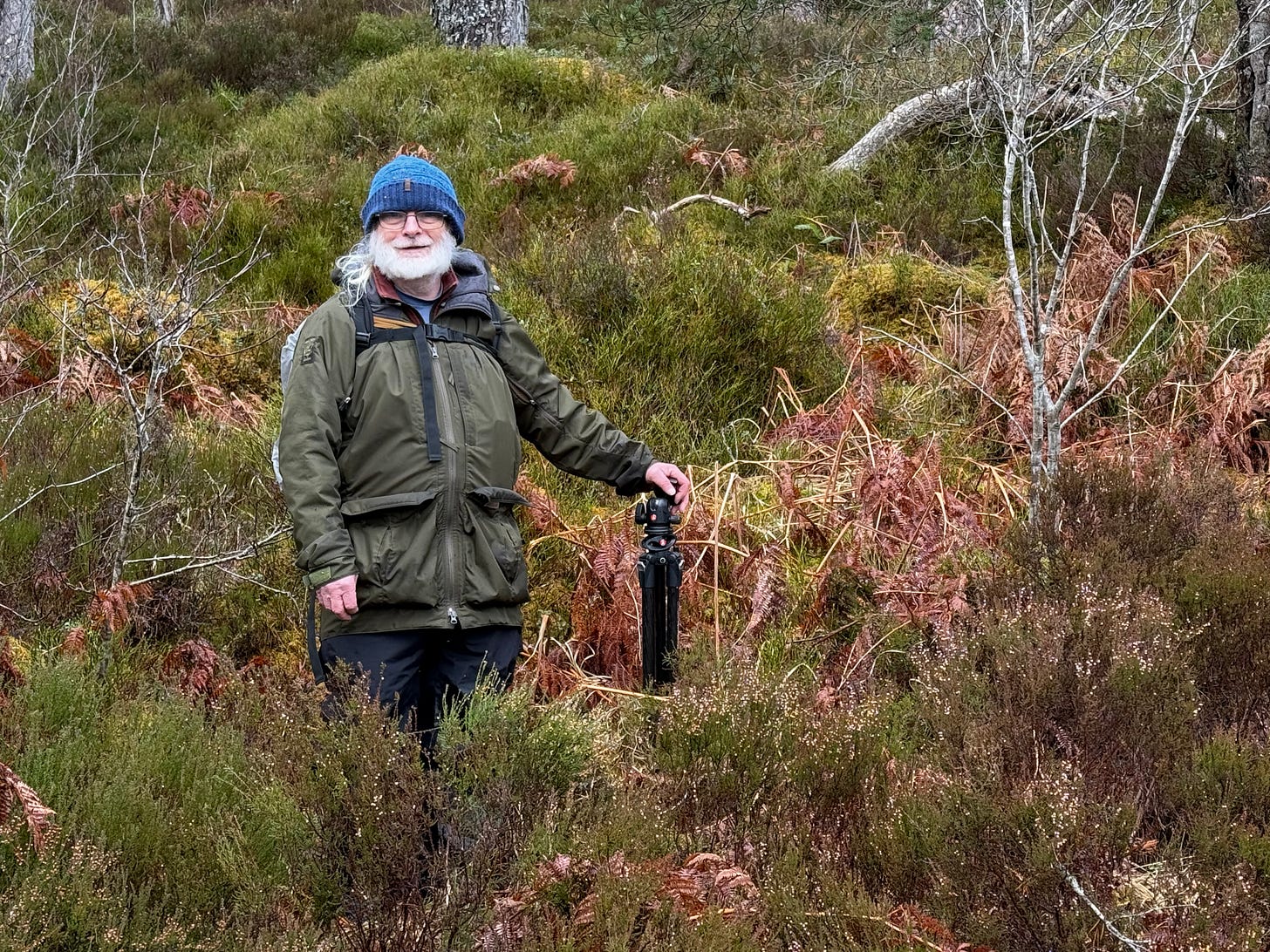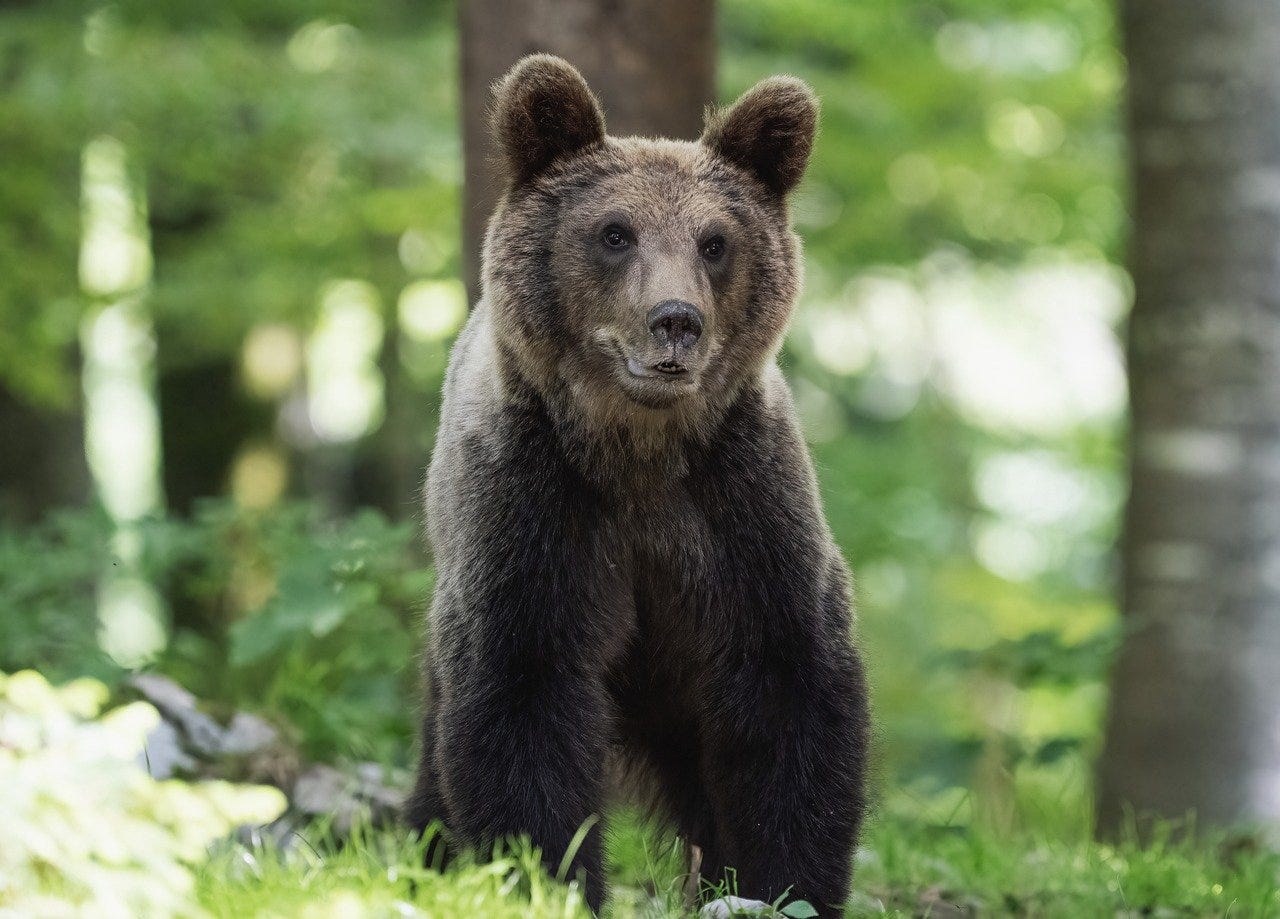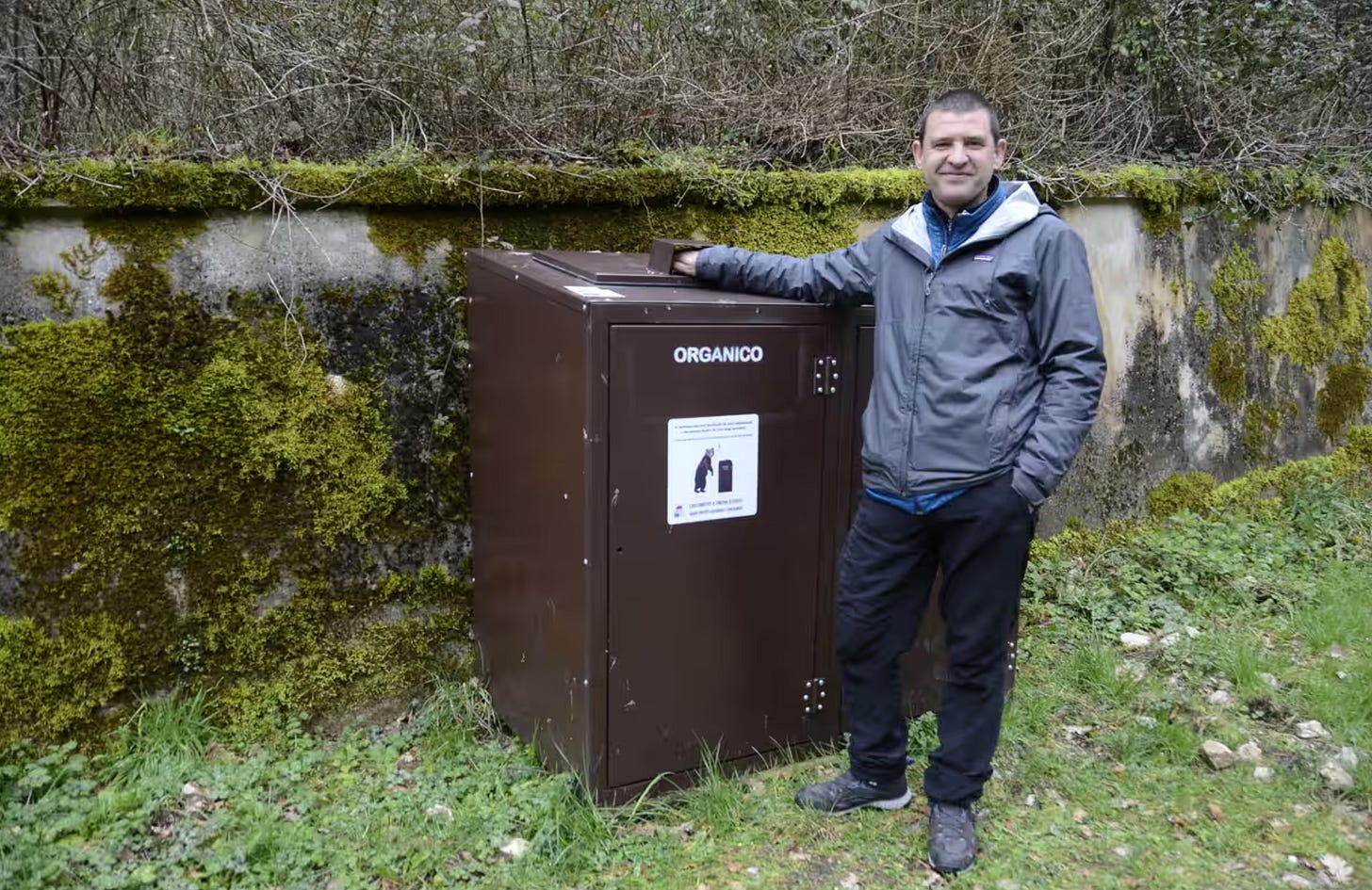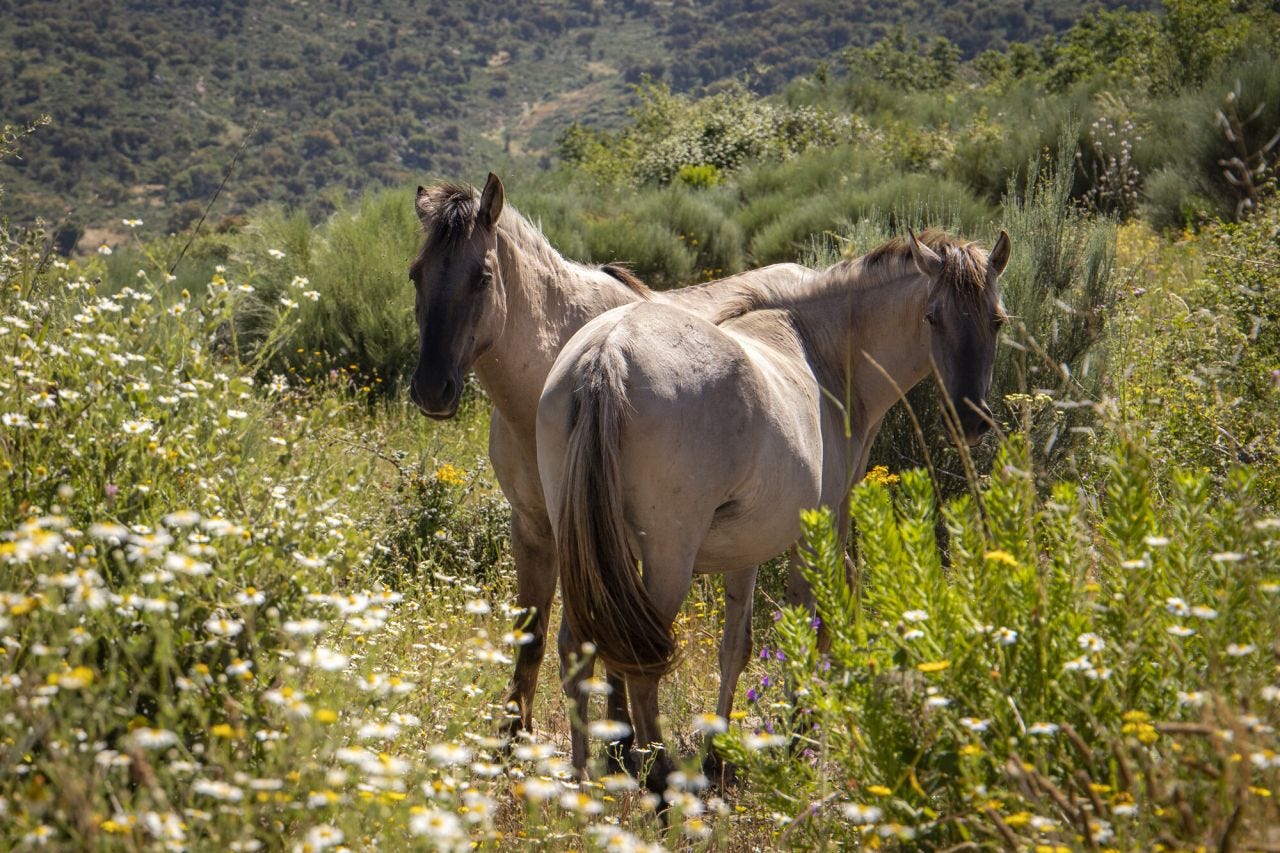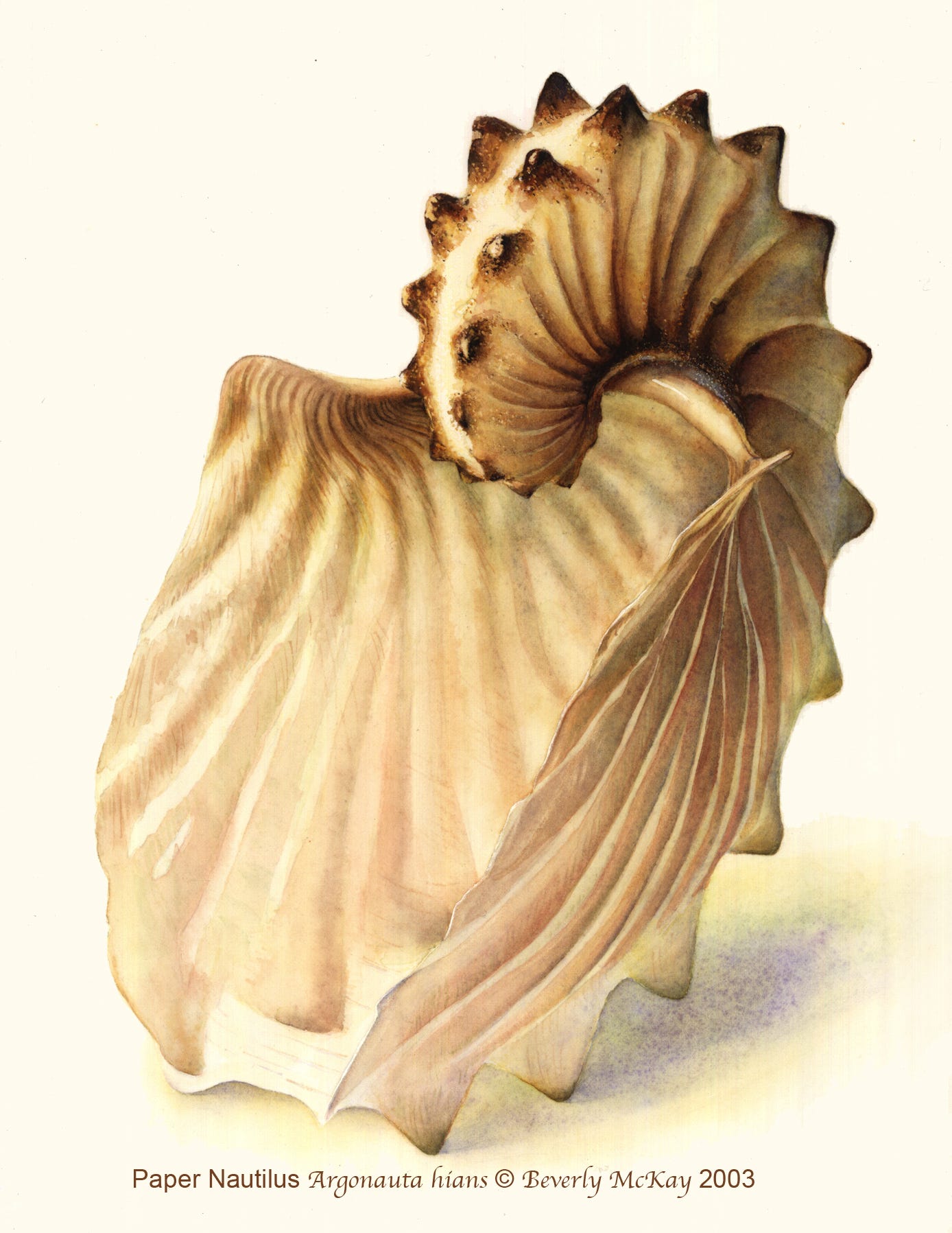Welcome to the latest edition of the Rewilder Weekly! 🦬🌳🐺🌞🌍
Before jumping into this week’s eight selected stories, I have to add one more: As a declared large-herbivore fanboy, I just have to highlight this CNN Call to Earth article about the return of the European bison.
Now then, let’s get on with it - wishing you a good week!
Cheers,
👉 As a reminder: If you come across stories you’d like to see featured in an upcoming edition of the Rewilder Weekly, send them to me and I’ll gladly do what I can.
1) A blind man goes into the woods
I got to spend a very special day with legendary Alan Watson Featherstone. We were in Glen Affric for nearly nine hours and at some point, I realized that, compared to the way Alan sees and understands the world around him, I am blind. I’d like to think that I’m quite perceptive, that I pay attention, that I have great curiosity and happily learn new things all the time. But I feel that Alan lives what I’m trying to live at a whole different level.
From his early travels, to becoming an instrumental part of the Findhorn Foundation (a place that can teach the world a thing or two about community, spirituality and sustainability), to founding, living and growing Trees for Life … his life could fill several books (and maybe one day I’ll write one). We hiked up and into Trees for Life's first project - the 50-hectare Coille Ruih na Cuileige exclosure where woodland has been able to regenerate naturally, and beautifully so, for the past thirty-five years.
👉 and here to engage on LinkedIn
2) The countries, one Oder Delta
Which two countries, you ask? Why, Germany and Poland, of course! The efforts of Rewilding Oder Delta and the vast delta get a special focus in this latest Rewilding Europe documentary by French filmmaker Emmanuel Rondeau.
Rewilding Europe writes, “The Oder Delta, which is divided between Poland and Germany on the Baltic coast, is a unique region boasting a rich mosaic of terrestrial, marine, and freshwater ecosystems, strategically located on one of Europe's ecological crossroads. Ongoing rewilding actions have seen wildlife begin to thrive in more natural densities here, with restored natural processes reshaping the landscape.”
👉 Go here to learn more about Rewilding Oder Delta
👉 and here to engage on LinkedIn
3) The bright, wild future of the Cairngorms National Park
With its more than 4’500 square kilometers, the Cairngorms is Britain’s largest national park and I had the opportunity to catch-up with David Hetherington, the Cairngorms National Park Authority’s Nature Networks Manager.
Amazingly, this vast national park is very young - it was established in 2003. In that short period, it has become a tourism magnet, and thus a very important part of the Highlands economy. It contains a broad tapestry of elements that go from nature restoration to sustainable land management, and from promoting local businesses to developing green jobs, affordable housing and transforming transportation - all the while ensuring that the Cairngorms is a vibrant place for people to connect with nature in immersive and memorable ways.
👉 and here to engage on LinkedIn
4) Why move 15 Darwin's rheas from Argentina to Chile?
In the first international translocation of wild species for release in the Southern Cone, Rewilding Argentina and Rewilding Chile, offspring organizations of Tompkins Conservation, have brought 15 Darwin’s rheas across the Andes from Patagonia Park, Argentina to Patagonia National Park, Chile in order to restore depleted populations of this endemic species, crucial to maintaining healthy grasslands.
Tompkins Conservation writes, “Perhaps what’s most important about this milestone is the fact that it’s setting a precedent for global collaboration for rewilding. Countries need a regulatory framework to bring back species, working with neighboring communities where they are still present. We must work together at every scale if we want to solve the biodiversity crisis. Wildlife knows no borders.”
👉 and here to engage on LinkedIn
5) Exploring Highland Rewilding’s Bunloit estate
I had known about Highlands Rewilding, founded by Jeremy Leggett in 2019, for a long while. And so, when I had the chance to journey to rewilding projects in Scotland, I knew that I had to visit at least one of their three estates. The first, and also the first acquired by Highlands Rewilding, was Bunloit. I met with senior ranger Daniel Holm and he took me through the estate that’s been on a transformative rewilding journey since 2020.
Before then, for centuries, it had been sparsely populated, with the land used for forestry, game and grazing. A good five hundred hectares in size, it reaches from the middle of Loch Ness, high up into the western slopes of the Great Glen. There’s varied woodland, grass and peatland. We picked up on many subjects, such as: forest gardens, sheep fleece as protection against deer browsing; gorse creating woodland; the value of wild boar; Felicity the puma and other carnivores; Nessie lore; and the ideal of creativity native-positive corridors from coast to coast.
👉 and here to engage on LinkedIn
6) Slovakia’s plans to kill 350 bears
It continues. Isolated incidents lead to extreme overreactions by politicians. In this case, a man in Slovakia was killed by a bear - and the government’s solution is to kill 350 bears, a quarter of the country’s bear population. As always, while there can be a so-called “problem animal” - whether bear or wolf or beaver (take your pick) - the reaction should be in balance with the action. Countries that take nature (and its key ecosystem engineers) seriously, always strive to find non-lethal ways.
As an ecologist and politician of the opposition party says in the article, thousands of encounters happen every years without incidents. Michal Wiezik explains that previous culling didn’t work, and now more culling is set to take place to “cover up their failure”. There are best-practice coexistence measures out there - and that is what the Slovak government should focus on - not such horrendously ill-considered and over-the-top reactions.
👉 and here to engage on LinkedIn
7) Coexistence with bears: Italy shows the way
May Slovakia’s politicians (see previous story) learn the Italian town of Pettorano sul Gizio. They, too, can create “bear-smart” communities. The presence of bears leads some people to return to this once near abandoned town, and then there’s increased ecotourism.
Electric fences ensure that bears steer clear from more than 100 properties. There are signs, instructions, gates, bear-proof bins, you name it - this community gets it - and already 18 other communities across Europe are become bear-smart, too. “Residents are urged not to leave food out; ripe fruit is picked off the ground in orchards and food waste kept indoors until the rubbish is collected. Since 2014, there’s been a dramatic decline in damage by bears”, says Mario Cipollone of Rewilding Apennines.
8) Step into rewilded nature, in Portugal’s Côa Valley
“From observing Sorraia horses in beautiful flower-rich landscapes, to watching majestic vultures soar, exploring prehistoric rock carvings, and tasting local products, each journey reveals the valley’s natural wonders.” Sounds pretty awesome, doesn’t it? So, by all means, as you plan your next holidays, think Portugal. But instead of crammed beaches, step into beautiful wilderness.
Take a closer look at the offerings of the Wild Côa Network. Together with local partners and Rewilding Portugal, they give you the opportunity to immerse yourself in Portugal, with its people, wildlife, landscapes and culture like you’ve never experienced it before.
👉 Go here for many different rewilding packages
👉 and here to engage on LinkedIn
As usual, the Rewilder Weekly concludes with one of science illustrator Beverly McKay’s works. She writes, “The paper nautilus (argonauta hians) is an octopus sort of animal. She lays her eggs in this brittle case and it floats on the ocean surface until the young ones hatch and enter the water. I used to find these shells or rather egg cases washed up on the beaches in Ras al Khaimah, UAE, in the late winter months. This is one of a number of watercolour paintings I did of these beautiful, delicate objects.”
If you enjoy the Rewilder Weekly …
… consider supporting my work. Your paid subscription will help generate the funds needed to realize a unique rewilding book I’m working on (if you want to know more about it, let me know). And, of course, that paid subscription also ensures that the Rewilder Weekly will always keep going for those who cannot afford to pay. A thousand thanks!
That’s it for this week’s edition! For more rewilding insights and stories from around the globe, use the #rewilding hashtag on LinkedIn and follow people, organizations and groups that are as passionate about rewilding as you are. Let’s keep connecting and growing the movement!








